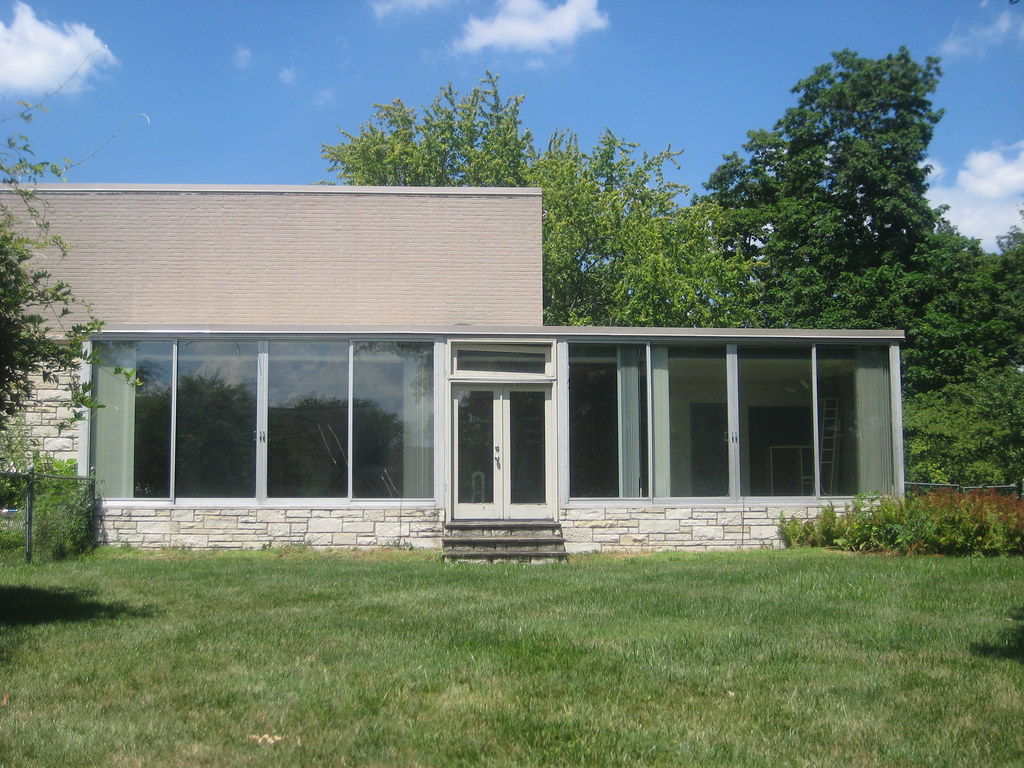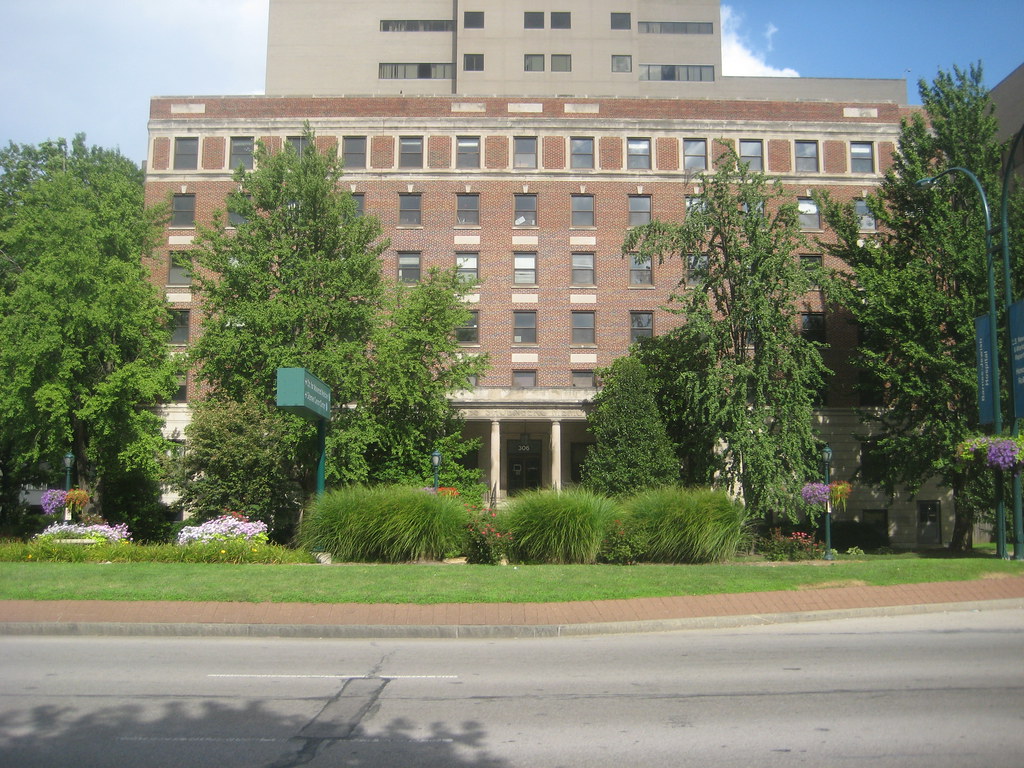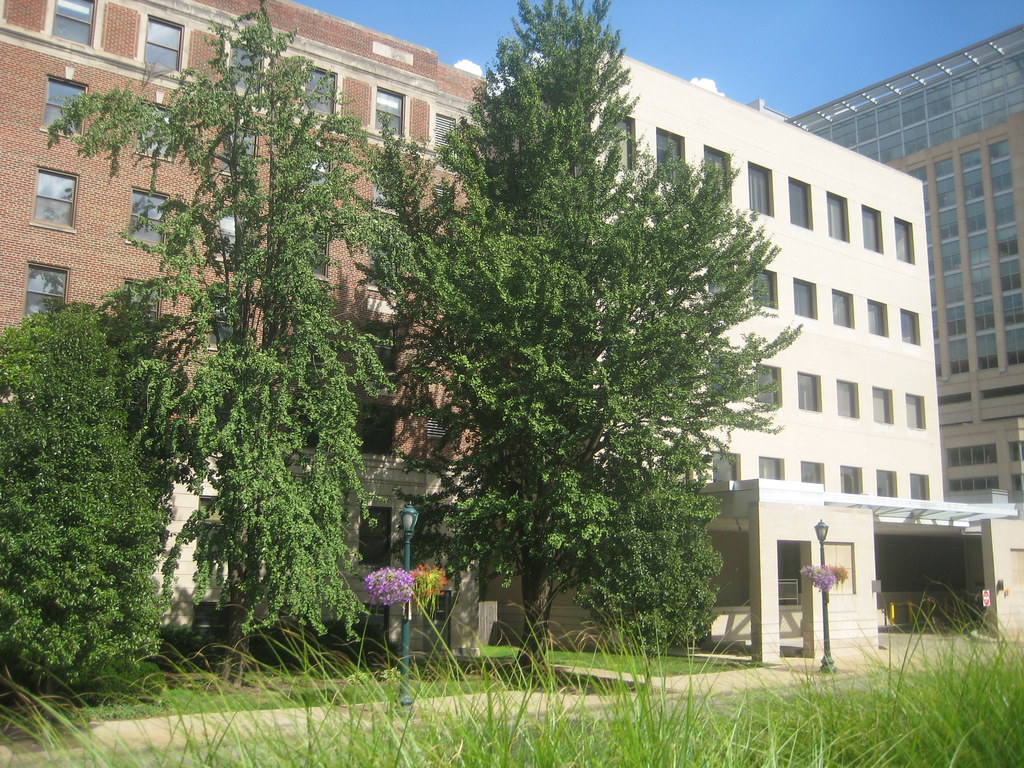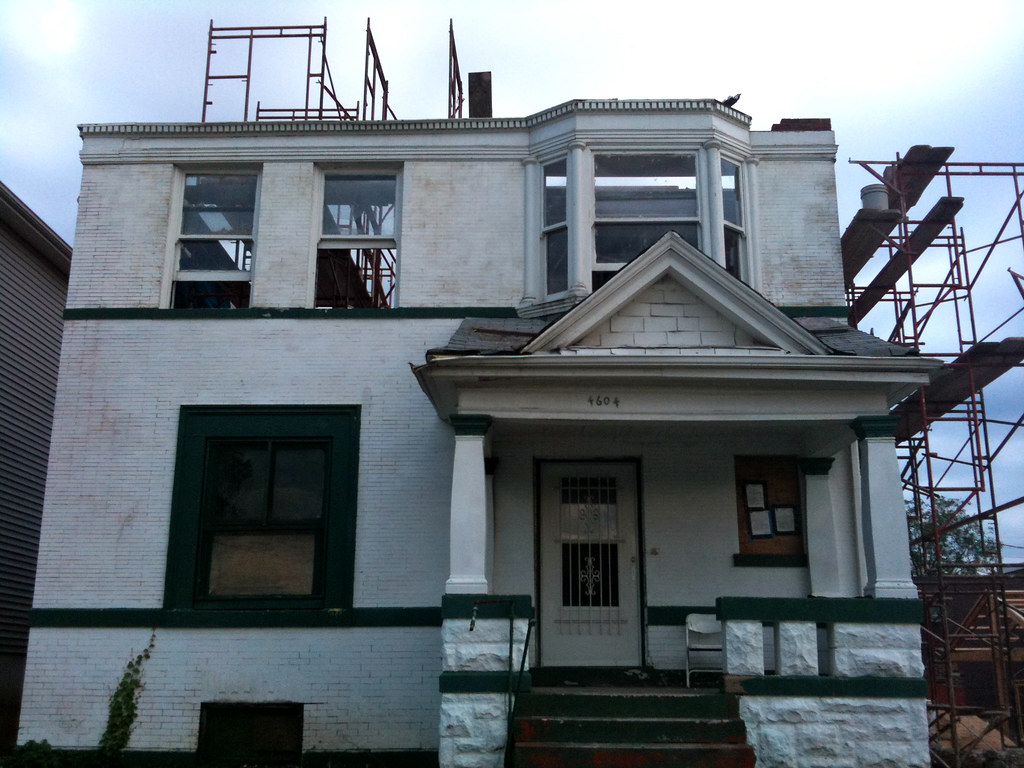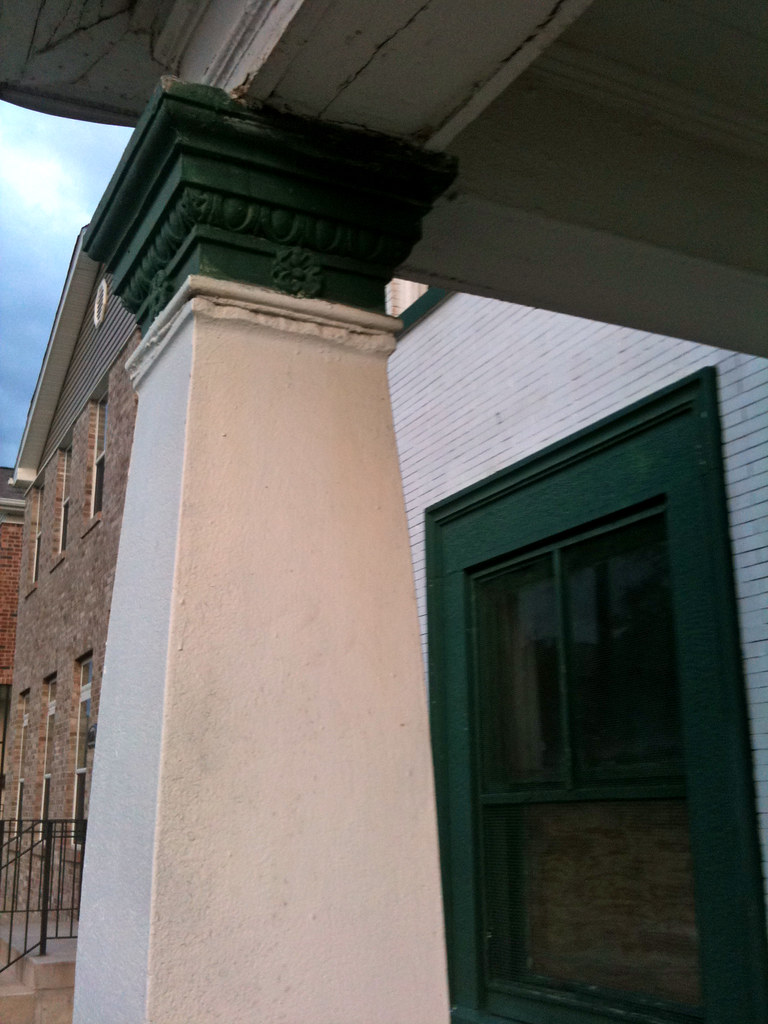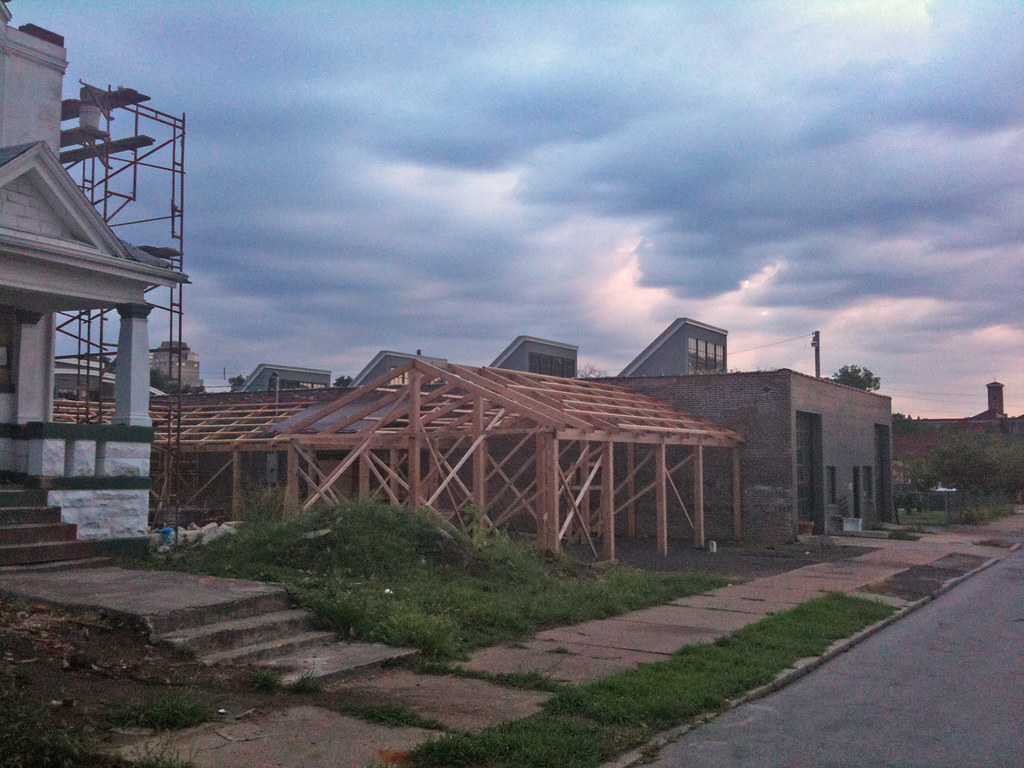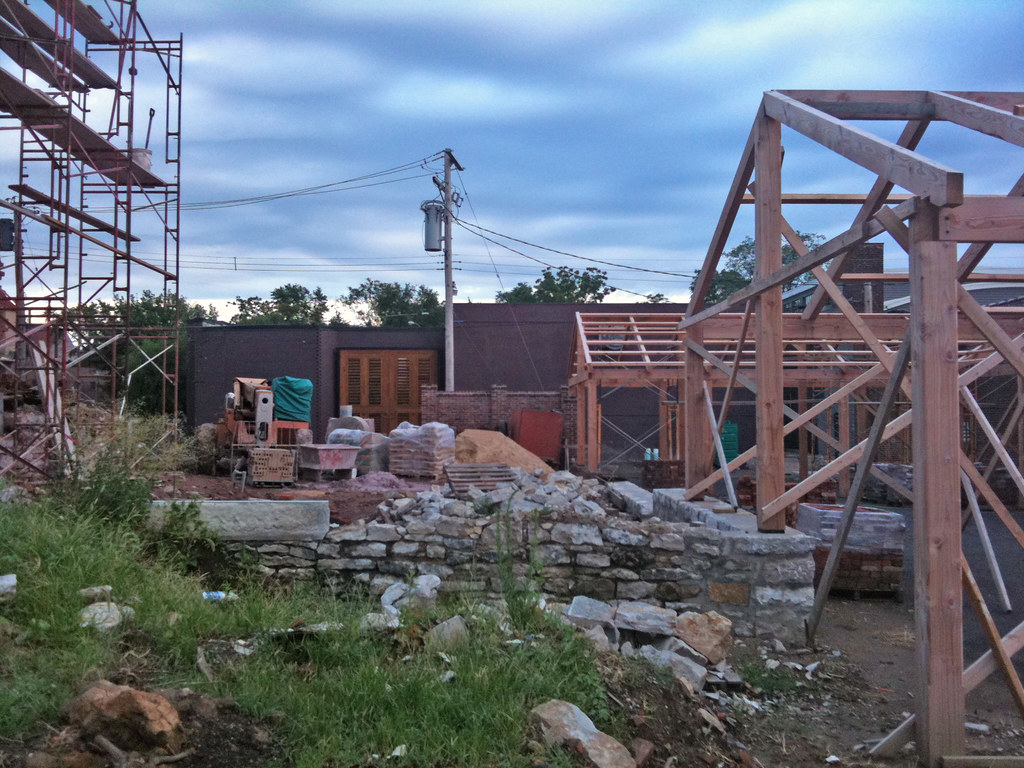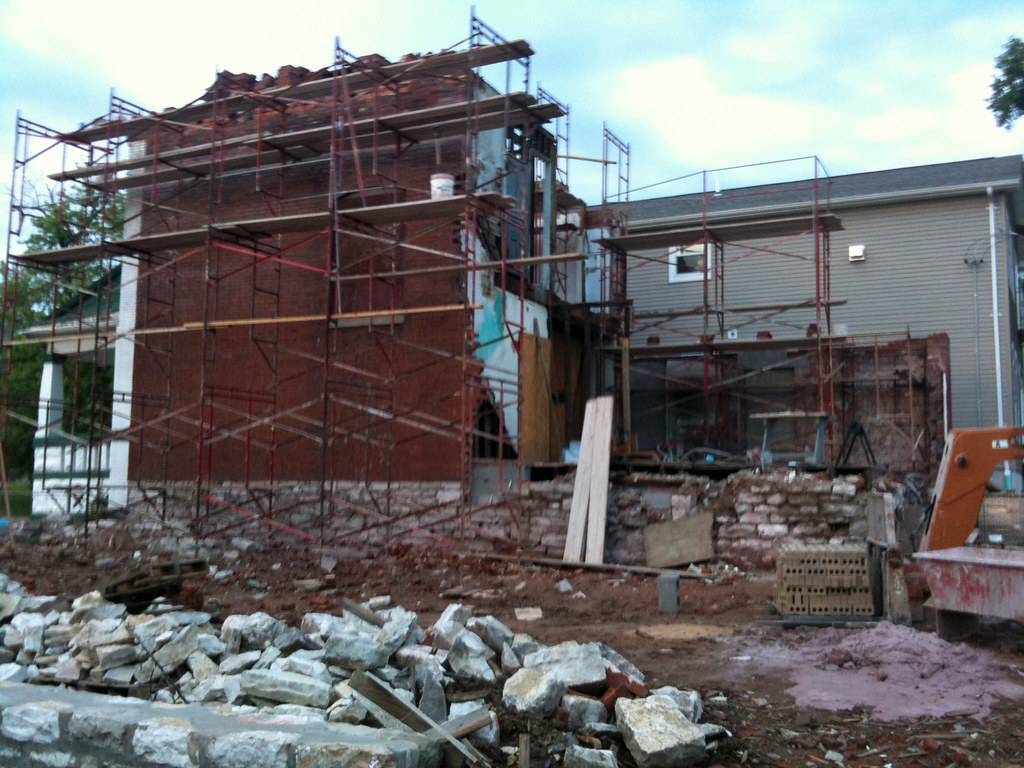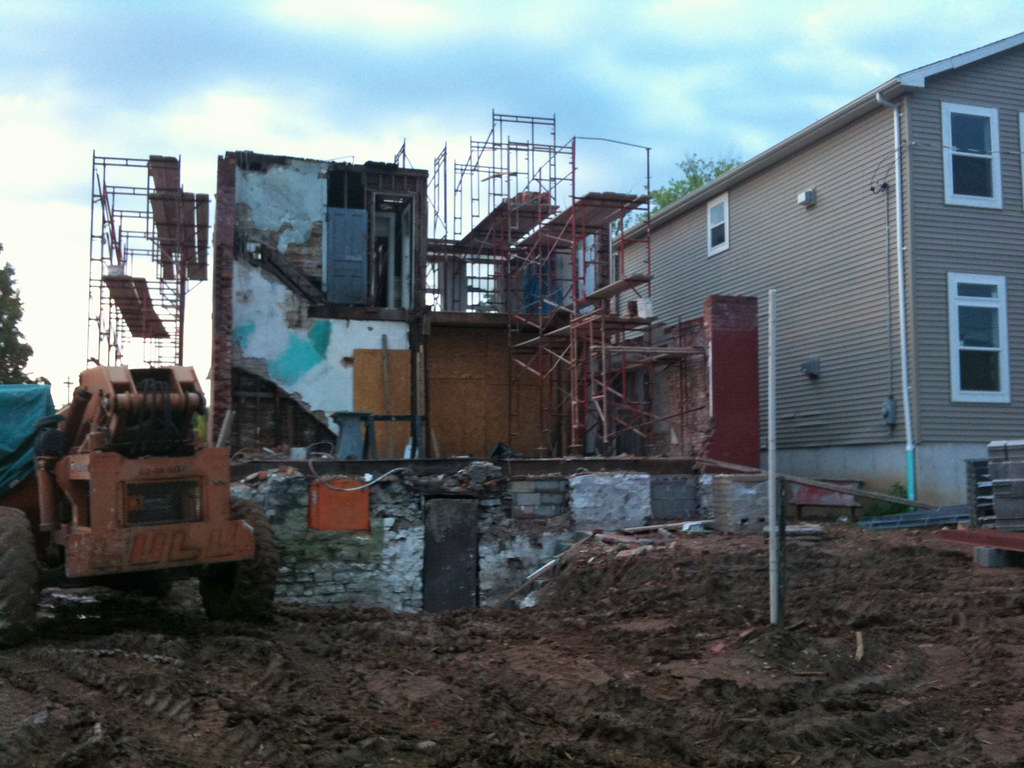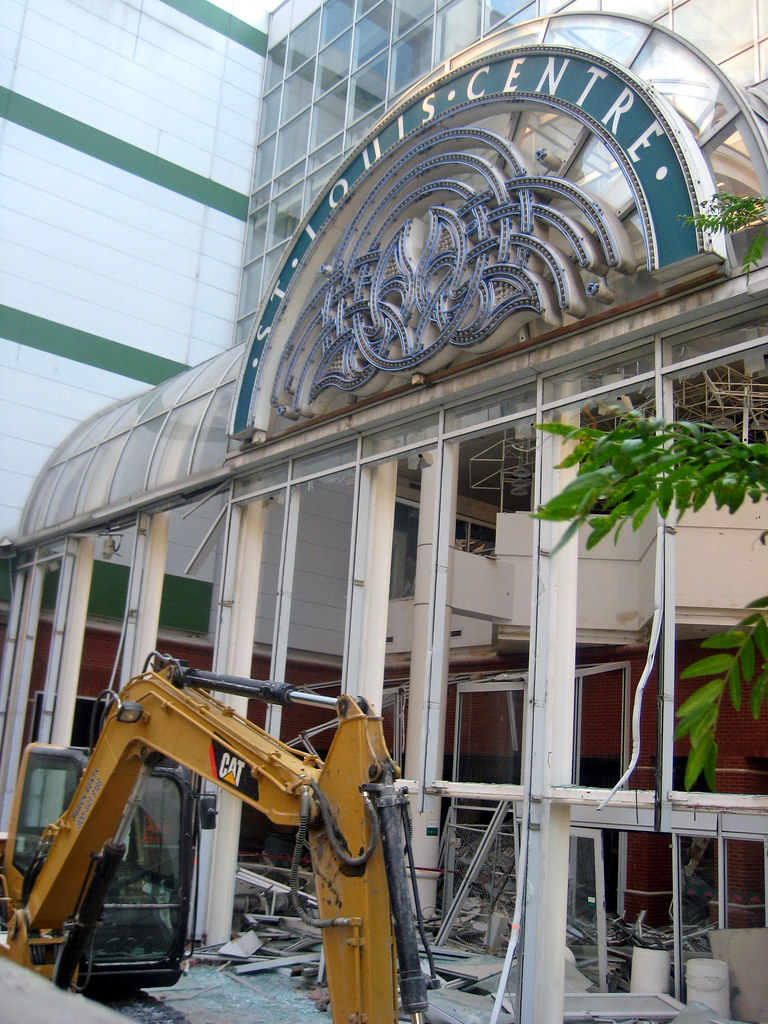 The International Style home at 12 Brentmoor Park was built in 1952 for Morton D. May, president of The May Department Stores Company. The home was designed by the architectural firm of Fischer-Campbell with a 1956 addition by Frederick Dunn.
The International Style home at 12 Brentmoor Park was built in 1952 for Morton D. May, president of The May Department Stores Company. The home was designed by the architectural firm of Fischer-Campbell with a 1956 addition by Frederick Dunn.The home has been for sale for several months now (not sure if the holstein is included), but I was recently made aware of the fact that it is being advertised by Gladys Manion Real Estate both for its potential to restore a mid-century masterpiece or as a tear-down!
The advertisement describes the home first as an asset to renovate but then does an about-face with: "Alternatively, this 1.39 acre flat lot would be an idyllic setting for your new dream home. Limitless potential in one of St. Louis' most desirable, centrally located neighborhoods".
The 1956 addition to the home by Frederick Dunn
You may recall that May had commissioned Architect Samuel Marx to design a larger International Style home on Warson Road in Ladue in 1941. This exquisite estate was demolished in 2005 and replaced with an over-bloated fake French chateau which turns its back side to the large meadow that May's home was designed to overlook. To even think that this house has even the remote possibility of meeting the same fate is maddening!
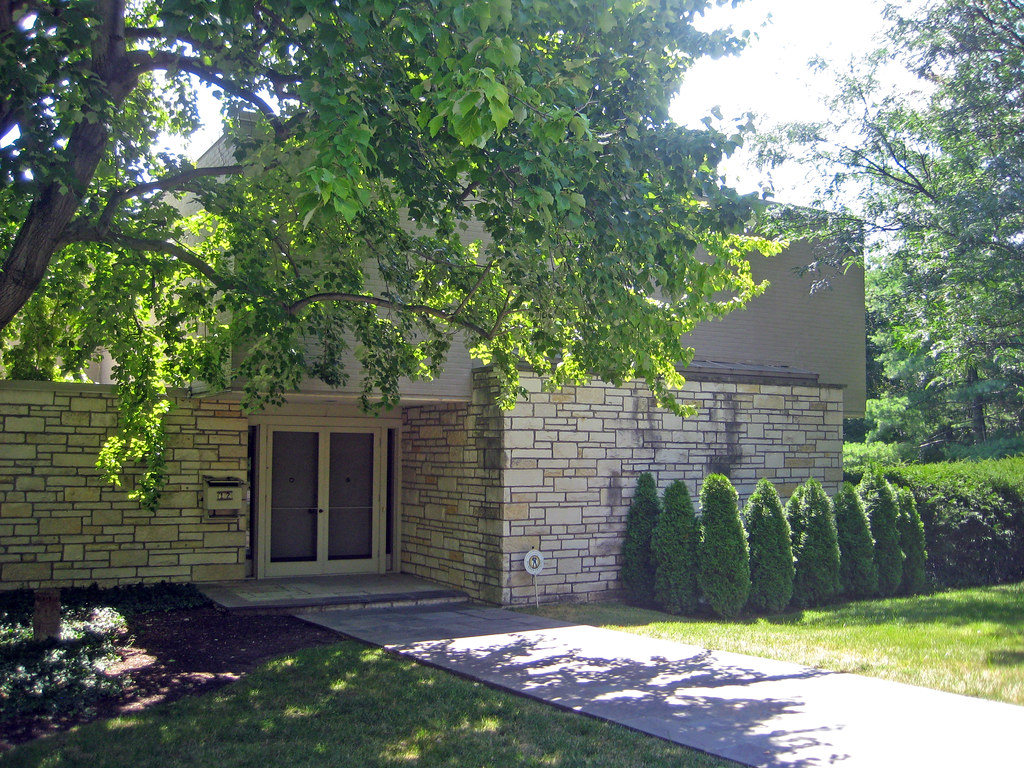 I was made aware of the potential peril of this unique house by artist Riha Rothberg, who now resides in New Mexico, but remembers the Brentmoor home from when the Mays lived there. Rothberg explained that she was momentarily "in the Twilight Zone" looking at my photos of May's demolished home on Warson Road since there were many features that are strikingly similar to this residence including the entrance shown above.
I was made aware of the potential peril of this unique house by artist Riha Rothberg, who now resides in New Mexico, but remembers the Brentmoor home from when the Mays lived there. Rothberg explained that she was momentarily "in the Twilight Zone" looking at my photos of May's demolished home on Warson Road since there were many features that are strikingly similar to this residence including the entrance shown above.  The living room fireplace also bears resemblance to that of May's former home. The stairs beyond to the second level however are very ordinary when compared to Marx's exquisite floating helical staircase that greeted visitors upon entering the Warson Road residence.
The living room fireplace also bears resemblance to that of May's former home. The stairs beyond to the second level however are very ordinary when compared to Marx's exquisite floating helical staircase that greeted visitors upon entering the Warson Road residence.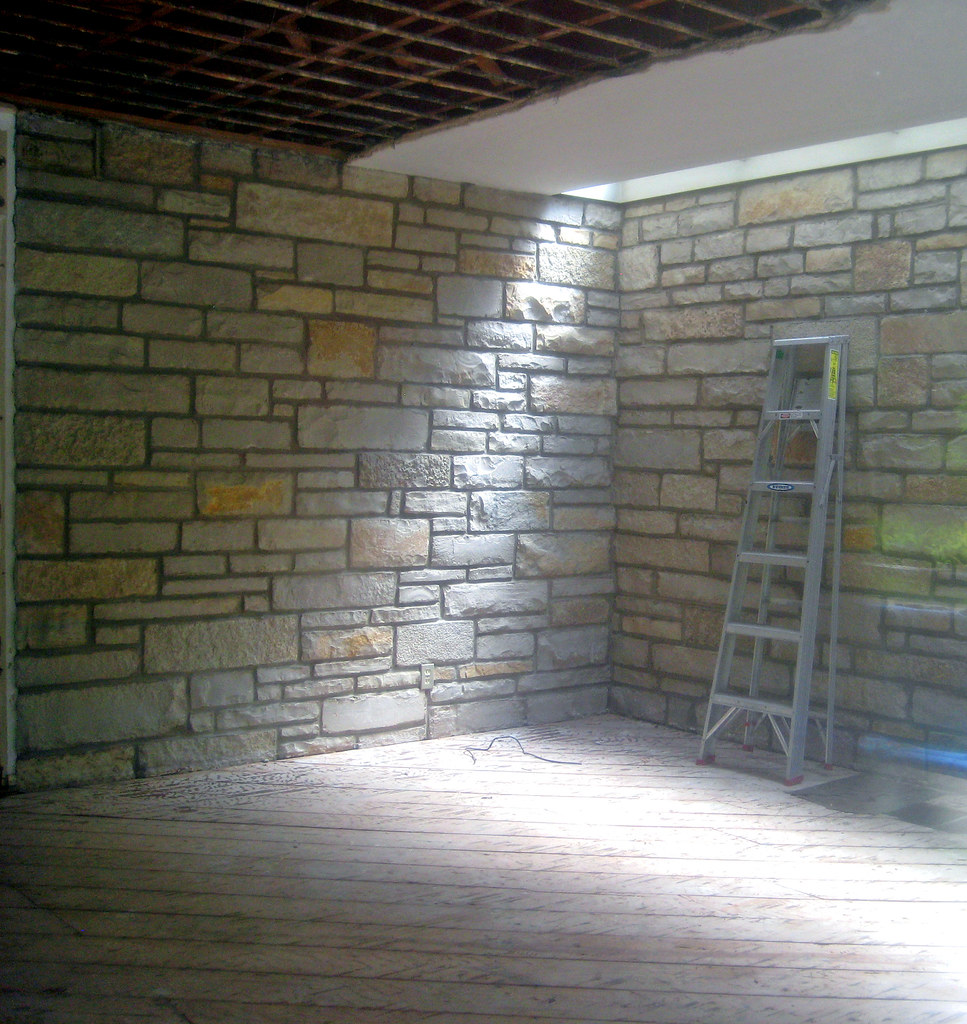 The east wall of the living room is bathed with light from a feature unique to this home, a narrow linear skylight that occurs where the first floor base of the house pushes out beyond the rectangular second floor form which cantilevers over the terrace to the south. The west end of the house has the same feature (see to the right of the entrance above).
The east wall of the living room is bathed with light from a feature unique to this home, a narrow linear skylight that occurs where the first floor base of the house pushes out beyond the rectangular second floor form which cantilevers over the terrace to the south. The west end of the house has the same feature (see to the right of the entrance above).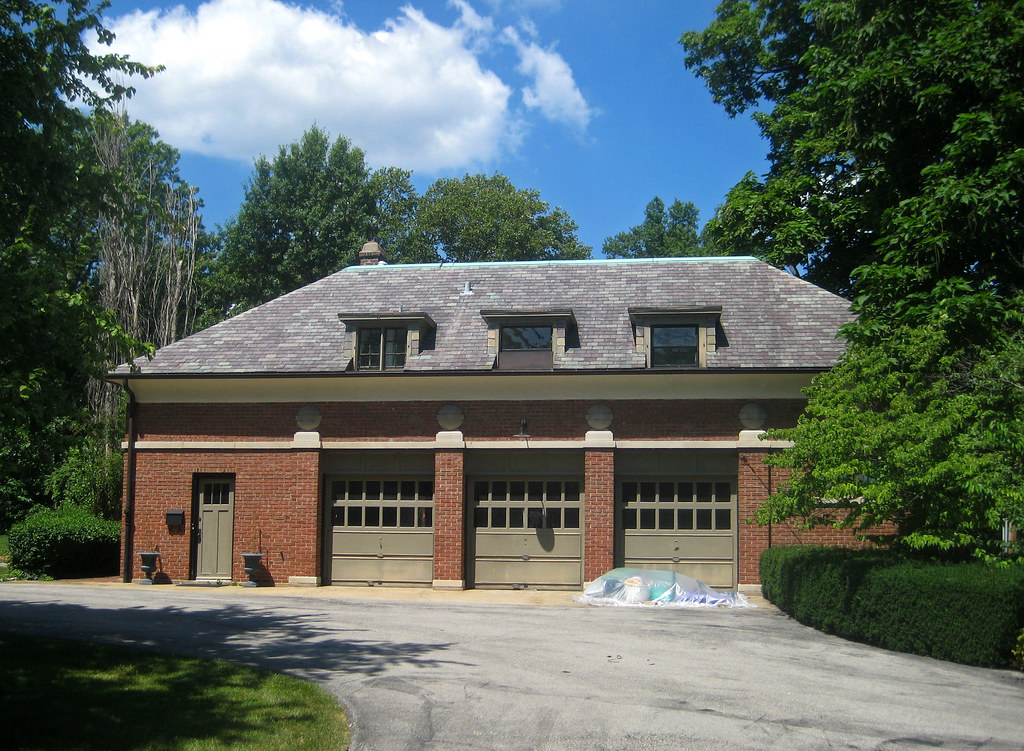 The property also includes this large garage/ carriage house. This was was part of 11 Brentmoor, designed by Howard Van Doren Shaw in 1912 (the property was divided to build #12) Morton D. May's father Morton J. May, who was a co-founder of the Muny Opera, lived at number 11. The carriage house has an L shaped wing of living quarters off the back with its own small courtyard. The ensemble would make a very nice guest house to compliment the modern residence.
The property also includes this large garage/ carriage house. This was was part of 11 Brentmoor, designed by Howard Van Doren Shaw in 1912 (the property was divided to build #12) Morton D. May's father Morton J. May, who was a co-founder of the Muny Opera, lived at number 11. The carriage house has an L shaped wing of living quarters off the back with its own small courtyard. The ensemble would make a very nice guest house to compliment the modern residence. The more things change, the more they stay the same: This "secret" path still connects Brentmoor and West Brentmoor allowing residents to walk between the neighborhoods. Brentmoor, West Brentmoor and nearby Forest Ridge across Wydown encompass a National Register Historic District which makes a renovation the Morton D. May residence eligible for Missouri's 25% Historic Rehabilitation Tax Credit.
The more things change, the more they stay the same: This "secret" path still connects Brentmoor and West Brentmoor allowing residents to walk between the neighborhoods. Brentmoor, West Brentmoor and nearby Forest Ridge across Wydown encompass a National Register Historic District which makes a renovation the Morton D. May residence eligible for Missouri's 25% Historic Rehabilitation Tax Credit.UPDATE: While still listed as a potential tear-down, at my request, the agent for Gladys Manion added that the home is in a historic district and may be eligible for historic tax credits.


